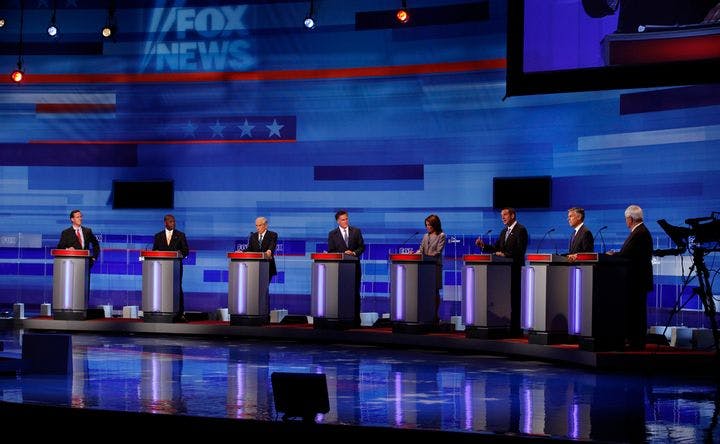Fall 2010
Why is the presidential nomination process such a mess?
– The Wilson Quarterly
Fixing the presidential primaries.
Why is the process for selecting the candidates for the nation’s highest office such a mess? In the absence of constitutional directives, it has evolved haphazardly over 200 years, and the result is a system that is deeply unpopular: The tiny and very white states of Iowa and New Hampshire have disproportionate power, very few people participate, and chaos erupts every four years, as states vie to schedule their contests earlier and earlier to gain greater sway over the final outcome and to boost their economies. Political scientists Caroline J. Tolbert, Amanda Keller, and Todd Donovan have a solution that combines the best features of earlier reform ideas.
Seven in 10 Americans favor switching to a national primary—one day when voters everywhere would head to the polls. Such an event would likely boost participation, since many people don’t vote under the current system because the winner is often decided long before it’s their turn to cast a ballot. In 2008, less than a quarter of the voting-age population voted in a presidential primary, and that was a good year. The problem with a national primary is that it would do away with one of the greatest strengths of the current system: Since the primaries begin in small states, candidates without huge war chests and who are not necessarily the darlings of the political establishment can win with old-fashioned door-to-door campaigning. A national primary would require candidates to be able to campaign on a national scale from the get-go.
But Tolbert and her colleagues aren’t too keen on one of the leading alternatives, known as a “graduated random presidential primary system.” Under such an arrangement, smaller states would vote early in the primary season, but the exact order would change every four years. Larger states would be allowed to begin holding their primaries several weeks into the process. Some critics worry that such a system would be confusing for voters and unfair to large states.
The authors propose a hybrid approach: Begin with a dozen primaries or caucuses in small-population states to allow unknown candidates a chance to prove themselves, but let these contests decide only a “tiny” number of these states’ delegates to the nominating conventions. In essence, let these early contests be straw polls. Then, when that phase is completed, hold a national primary. This approach would preserve the relatively open playing field of the current system and at the same time allow more people’s votes to matter.
THE SOURCE: “A Modified National Primary: State Losers and Support for Changing the Presidential Nominating Process” by Caroline J. Tolbert, Amanda Keller, and Todd Donovan, in Political Science Quarterly, Fall 2010.
Photo courtesy of Flickr/IowaPolitics
